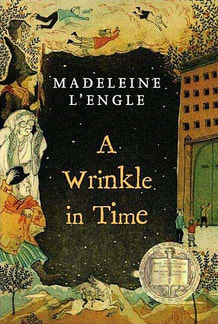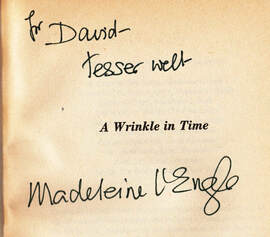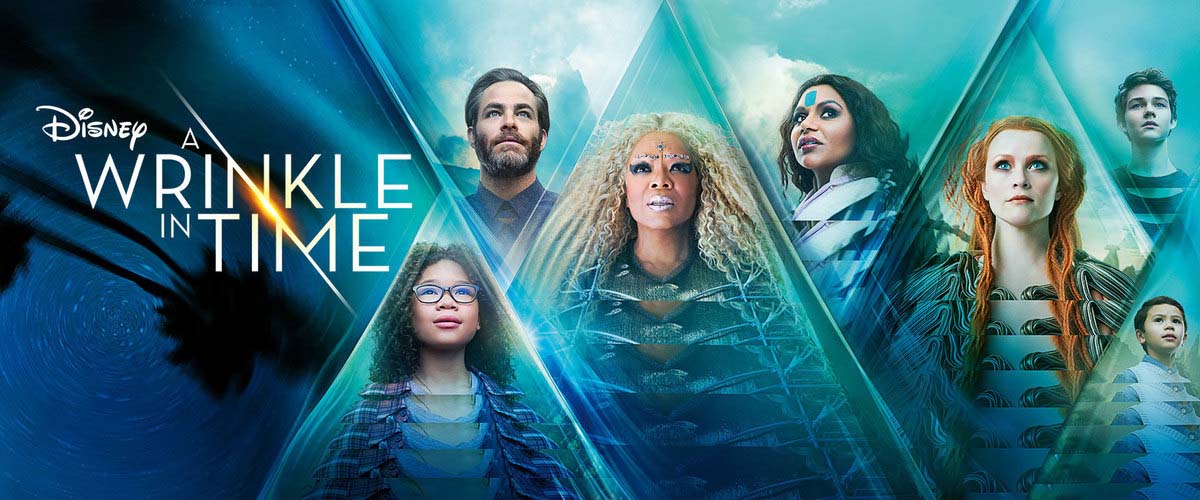|
Some people are just amazing. Einstein and Shakespeare, for instance, stand out as exceptional. Joan of Arc led the armies of France as a teenager. In the film Amadeus, Mozart seems to compose concertos and symphonies with little to no effort, while his rival composer Salieri painstakingly works to produce material which can never measure up. It appears some people are chosen for great things, gifted with special abilities, while others are not. And that’s reflected in the stories we tell.

Let’s take a look at A Wrinkle in Time by Madeleine L’Engle. In this story, boy-genius Charles Wallace Murry speaks with a vocabulary well-beyond his years, probably on account of his reading the dictionary for fun, and at five years old he quickly grasps the concept of travel through time and space. But he’s more than just your average child prodigy. As his mother says, "Charles Wallace is what he is. Different. New." You might say, unique. The boy knows things about people without being told. He can feel around in other people’s minds, and he can usually tell whether a stranger is friendly or sinister. His gifts go far beyond what you would expect.
With everything going for him, you’d think Charles Wallace would be the story’s main character. Wouldn’t you as a reader like to spend some time in the head of a genius and see things from his perspective? But instead L’Engle chooses to present the book to us through the eyes of Meg, Charles Wallace’s older sister. Meg is best known for not being able to control her temper. She gets in plenty of trouble at school and is stubbornly protective of her brother. She certainly doesn’t feel gifted. Rather, she believes she’s "doing everything wrong." Meg can’t seem to keep from lashing out, and the fact that people are gossiping about her missing father doesn’t help matters. 
So Meg and Charles Wallace go off on their adventure to the planet Camazotz, along with Calvin, a popular kid on the high school basketball team. They’re guided by Mrs. Whatsit, Mrs. Who, and Mrs. Which, three otherworldly beings who explain the children’s gifts to them. As Mrs. Whatsit says to Calvin, "your great gift is your ability to communicate, to communicate with all kinds of people." Now that’s pretty handy when you’re visiting other worlds. What's a little less handy is the gift Meg gets stuck with. Mrs. Whatsit says, "Meg, I give you your faults." You heard that right. Meg gets to keep her flaws. If that seems a bit unfair to you, you're not alone. Meg is understandably confused. Either Mrs. Whatsit is just being spiteful, or she knows something we don't.
Charles Wallace the genius, Calvin the great communicator, and Meg, the girl who does everything wrong, arrive in Camazotz via a tesseract and come face to face with the villain of the book, known simply as IT. Five-year-old Charles Wallace takes charge of the situation immediately, engaging IT in a battle of wits. IT, represented by a man with red eyes, instantly takes a special interest in Charles Wallace. He notes the complexity of the boy’s "neurological system" which surpasses the brains of Meg and Calvin. And so Charles Wallace becomes the villain’s main target. 
Now, seeing a five-year-old boy go up against such a powerful villain might look a bit unfair, but who better to do the job than a genius with superhuman powers of the mind? It’s like Charles Wallace was born for this role. He's the gifted one, after all. What could go wrong? Well, this is where Charles Wallace would have been wise to listen to some advice from Mrs. Whatsit and company. Mrs. Who tells him, "Remember that you do not know everything." Mrs. Whatsit adds, "Beware of pride and arrogance, Charles, for they may betray you." And so they do.
Charles Wallace wants to find out exactly what IT is. So IT makes an offer to him. IT says that if the boy will simply look into the man’s eyes and open up his mind to him, IT will reveal everything, including the location of their missing father. You may not remember this scene if you’re thinking of the 2018 Disney film version, which skips over it altogether, but I think it’s crucial to the story. Charles Wallace has a decision to make. He agrees to IT’s offer, despite Meg’s protests that IT is stronger than he is. She maintains that once he submits to IT’s mind, he won’t be able to leave again. But Charles Wallace insists that he has to try. He lowers his mental defences and opens himself up to IT, and loses himself. The next instant Charles Wallace has been hypnotized. His mind and body are fully in control of the villain. 
Little Charles Wallace is out of commission. Calvin uses his gift of communication to try and break through to the boy, but cannot. It quickly becomes a hopeless situation. It seems like they had a chance to defeat IT while they had Charles Wallace on their side. But now that the boy-genius has turned against them, what can they do? Enter Meg Murry. You may remember her as the girl who gets everything wrong. If she has a gift, it’s a gift for getting in trouble. But Mrs. Whatsit believes that somehow the personality traits which give Meg a hard time on Earth—her faults—will end up helping her on Camazotz. And, surprisingly, they do. Meg identifies her faults as "anger, impatience, stubbornness." She uses these same flaws to resist the power of IT and to rescue herself from Camazotz. By sheer willpower Meg tessers away, escaping the scene, and saves her father and Calvin as well.
It’s a great turning point in the story. The perfect happy ending. There’s just a small problem—Charles Wallace. The five-year-old boy gets left behind. Unfortunately, the characters have come to the end of their abilities and come up short. Charles Wallace’s powers aren’t enough to save him from IT. Meg’s anger and perseverance accomplish a lot, but they aren’t enough either. The children also fail to follow some crucial advice from Mrs. Whatsit and company, who told them to stick together and not to go off on their own. Charles Wallace’s mistake is that he thought he could face IT alone. But don’t gifted people, by their very nature, stand out alone—somehow separate from the rest of us? They seem like independent people who can do whatever they set their minds to. When was the last time Shakespeare or Mozart needed help? (Probably not recently.) It turns out being gifted isn’t everything we imagine because gifts have their limits. Our intelligence has limits. Our strength and perseverance have limits. So if Meg wants to save her brother, she needs something more. Thankfully, Mrs. Whatsit has one last gift. The first time she told Meg to use "your faults." Now Mrs. Whatsit says, "I give you my love, Meg." And that makes all the difference. Why? Because love is always the easy solution in stories like these? Not quite. If you think about it, having love means you’re not alone. You can live alone as a genius, never getting outside your own head, but with love you have to share it with someone else. Meg realizes that she has "Mrs. Whatsit’s love, and her father’s, and her mother’s, and the real Charles Wallace’s love . . . And she had love for them." Even though Meg returns to Camazotz one last time on her own, somehow she takes everyone with her. With their love backing her, Meg can finally break through her brother's trance and rescue him too. The story's happy ending does not rely on a single person's strength. You don't have to worry about having special, superhuman abilities or being exceptional. Those kinds of gifts only take us so far. The victory in A Wrinkle in Time depends instead on your openness to receive something more, this special gift called love, and then to pass it on.
Comments
|
David Raphael HilderJoin the conversation as we explore the best there is in fantasy, sci-fi, adventure, and of course, the classics Archives
December 2020
Categories
All
|

